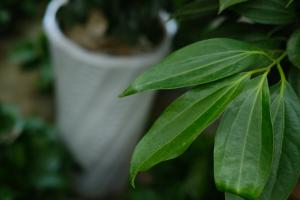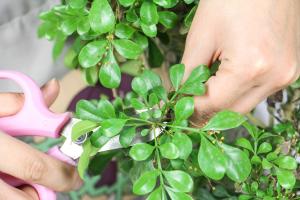How to Take Care of a Rubber Plant Tree
Are you looking for a low-maintenance houseplant that will add beauty to your home? Consider the rubber plant tree! This attractive plant is easy to care for and can grow up to 8 feet tall. Read on for tips on how to care for your rubber plant tree.
Light
The rubber plant tree prefers bright, indirect light. A sunny windowsill is a great spot for this plant as long as it doesn't receive direct sunlight. If the lighting isn't optimal, the plant may become thin and leggy as it reaches for more light. If necessary, supplement with artificial lighting.
Water
Like most plants, the rubber plant tree needs water to survive. However, it's important not to overwater this plant. Allow the soil to dry out a little before watering, and avoid letting water sit in the tray beneath the plant. Yellowing leaves may indicate overwatering. Additionally, be sure to use room temperature water to avoid shocking the plant's roots.
Humidity
Rubber plant trees appreciate a humid environment, which can be achieved by placing a humidifier nearby or grouping several plants together. Misting the leaves with room temperature water can also help, but be sure to do this in the morning rather than at night to avoid fungal growth. Avoid placing the plant near drafts or vents, which can cause the leaves to dry out.
Temperature
The rubber plant tree prefers warm temperatures between 60-75 degrees Fahrenheit. Keep the plant away from windows or doors that may allow drafts, and don't let the temperature drop below 50 degrees Fahrenheit.
Soil
Rubber plant trees prefer well-draining soil that is rich in nutrients. A mixture of peat moss, perlite, and potting soil is ideal. Avoid using garden soil, which may be too heavy and can harbor pests and diseases.
Pruning
Prune the plant regularly to keep it from becoming too tall or leggy. To promote bushier growth, pinch off new leaves at the tips of the stems. Remove any yellowing or dead leaves to keep the plant healthy and attractive.
Pests and Diseases
While the rubber plant tree is generally a hardy plant, it is susceptible to a few pests and diseases. Mealybugs and spider mites can be deterred with a neem oil solution. Overwatering can lead to root rot, while underwatering can cause leaves to dry out and become brittle.
By following these simple care tips, your rubber plant tree will thrive and add beauty to your home for years to come!

 how many times do yo...
how many times do yo... how many planted tre...
how many planted tre... how many pine trees ...
how many pine trees ... how many pecan trees...
how many pecan trees... how many plants comp...
how many plants comp... how many plants can ...
how many plants can ... how many plants and ...
how many plants and ... how many pepper plan...
how many pepper plan...






























